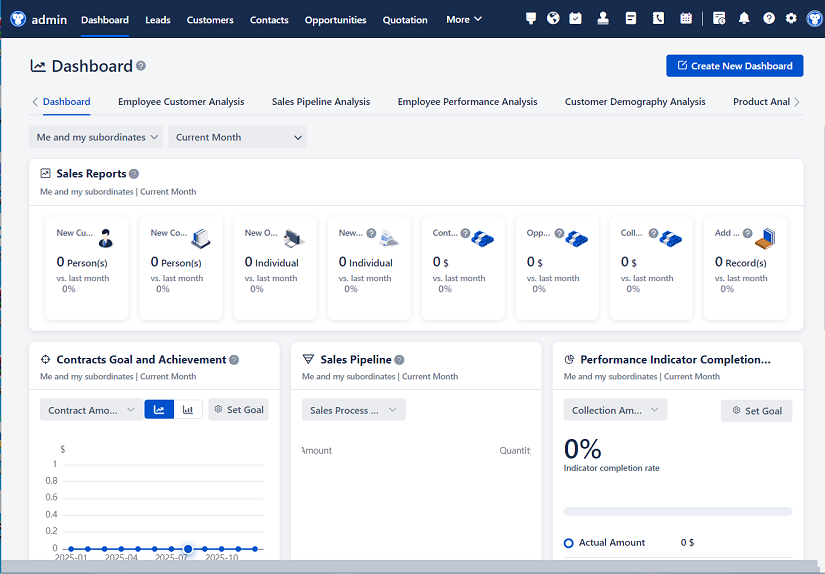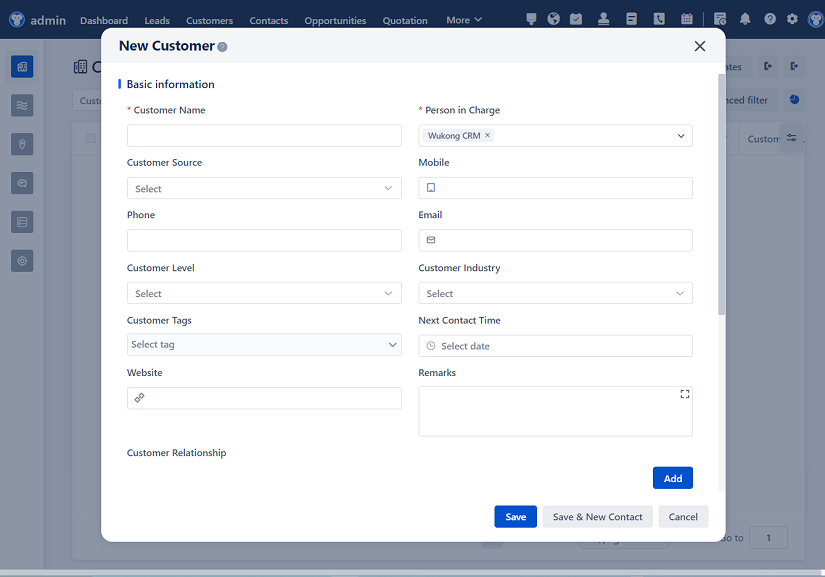
△Click on the top right corner to try Wukong CRM for free
Hey there! So, you're looking to get a handle on what a CRM Requirements Document is all about, right? Well, let's dive in and make this as clear and straightforward as possible. Imagine you're planning a big party, and you need to make sure everything from the guest list to the snacks is just perfect. A CRM (Customer Relationship Management) system is kind of like that, but for managing your business relationships. And just like how you'd write down all the details for your party, a CRM Requirements Document is where you jot down everything you need from your CRM system.
First things first, let’s talk about why we even need this document. You see, when you’re dealing with a bunch of different customers, it can get pretty messy trying to keep track of who said what, who needs what, and who’s happy or not so happy. That’s where a CRM comes in. It’s like having a super organized friend who remembers everyone’s birthdays, their favorite colors, and what they ordered last time at the restaurant. But before you can get this super friend, you need to tell the people making it exactly what you want. That’s where the CRM Requirements Document steps in.
Now, let’s break down what goes into this document. Think of it as a recipe. If you were baking a cake, you’d need to know what ingredients to buy, how much of each, and the steps to follow. Similarly, your CRM Requirements Document should have a few key sections. First up, you’ve got to define your goals. What do you want to achieve with this CRM? Maybe you want to improve customer satisfaction, or maybe you’re looking to boost sales. Whatever it is, write it down. It’s like deciding if you want your cake to be chocolate or vanilla – it sets the tone for everything else.

Next, you’ll want to think about the features you need. Do you want to be able to send out newsletters? How about tracking customer interactions? Or maybe you need something to help you manage your sales pipeline. List them all out. This is like writing down the ingredients for your cake. You don’t want to start mixing only to realize you forgot the sugar!

Then, there’s the part where you describe how these features should work. For example, if you want a feature to track customer interactions, you might say, “I need to be able to log every email, call, and meeting with a customer, and I want to see a timeline of all these interactions.” This is like giving detailed instructions on how to mix the batter, bake the cake, and decorate it. The more specific you are, the better the end result will be.
Another important section is the user roles and permissions. Who’s going to use this CRM? Are there different levels of access? For instance, you might want your sales team to have full access to customer data, but your support team might only need to see certain parts. It’s like deciding who gets to eat the cake and who just gets a slice. You want to make sure everyone has what they need, but not more than they should have.
And then there’s the integration part. Does your CRM need to talk to other systems, like your accounting software or your marketing tools? If so, you need to specify that. It’s like making sure your cake fits in with the rest of the menu. You don’t want it to clash with the main course, right?

Lastly, you’ll want to include some non-functional requirements. These are things like performance, security, and usability. How fast does the system need to be? How secure should it be? And how easy should it be to use? It’s like making sure your cake not only tastes good but also looks good and is easy to serve.
So, now that you’ve got all these pieces, how do you put them together? Well, you start by gathering all the information. Talk to your team, your customers, and anyone else who might have a say in what the CRM should do. Then, sit down and start writing. Don’t worry if it’s not perfect at first; you can always go back and tweak it. The important thing is to get everything down on paper (or, more likely, in a digital document).

Once you’ve got your draft, share it with your team and get their feedback. They might spot something you missed or have a better idea for a feature. It’s like taste-testing the cake batter. You want to make sure it’s just right before you put it in the oven.
After you’ve made any necessary changes, you’re ready to hand it over to the developers. They’ll take your document and turn it into a real, working CRM. It’s like giving your recipe to a professional baker. They’ll use their expertise to make sure the final product is exactly what you wanted.
But wait, there’s one more thing. Once the CRM is built, you’ll need to test it. Make sure it does everything you asked for and that it works the way you expected. It’s like taking that first bite of the cake. If it’s not quite right, you can always make adjustments.

Alright, so that’s the lowdown on CRM Requirements Documents. It might seem like a lot, but trust me, it’s worth it. Having a well-thought-out document will save you a ton of headaches down the road. Plus, it ensures that you get a CRM that really meets your needs.
Now, I bet you’ve got some questions. Let me try to answer a few:

Q: Can I skip the CRM Requirements Document and just tell the developers what I want? A: Sure, you could, but it’s not a great idea. Without a document, you risk missing important details, and the developers might not fully understand what you need. It’s like trying to bake a cake without a recipe – it might turn out okay, but it’s a lot riskier.
Q: How long does it take to create a CRM Requirements Document? A: It depends on the complexity of your needs and how many people are involved. For a small project, it might take a week or two. For a larger, more complex project, it could take a month or more. The key is to take the time to get it right, rather than rushing through it.
Q: What if I’m not sure about all the features I need? A: That’s totally normal. Start with what you know, and you can always add more later. It’s better to have a basic document that you can build on than to wait until you have everything figured out. Just like with a cake, you can always add more frosting or decorations later.

Q: Should I involve my customers in creating the CRM Requirements Document? A: Absolutely! Your customers are the ones who will be interacting with the CRM, so their input is invaluable. Ask them what they need, what they like, and what they don’t like. It’s like asking your guests what kind of cake they prefer. You’ll end up with a better product that everyone is happy with.
Q: How often should I update the CRM Requirements Document? A: As often as needed. If your business changes, or if you find that the CRM isn’t meeting your needs, it’s a good idea to revisit the document and make updates. It’s like adjusting the recipe if the cake doesn’t turn out quite right. The more you refine it, the better the end result will be.
Well, I hope that helps! If you’ve got any more questions, feel free to ask. Happy CRM-ing!
Related links:
Free trial of CRM
Understand CRM system
AI CRM Systems

△Click on the top right corner to try Wukong CRM for free